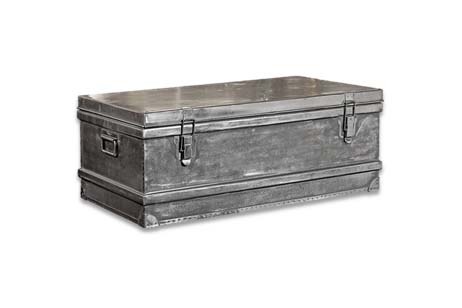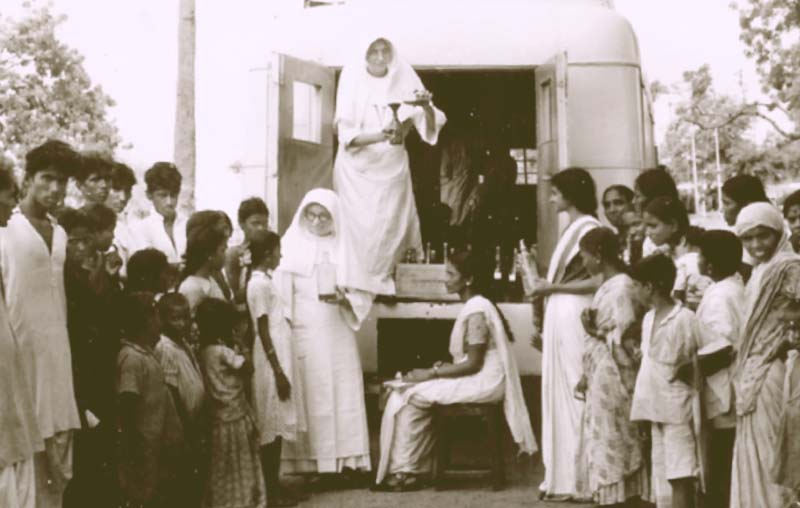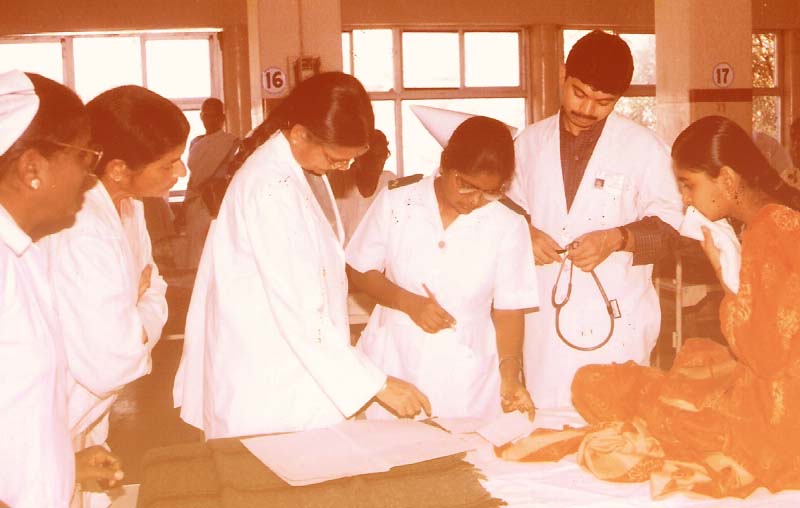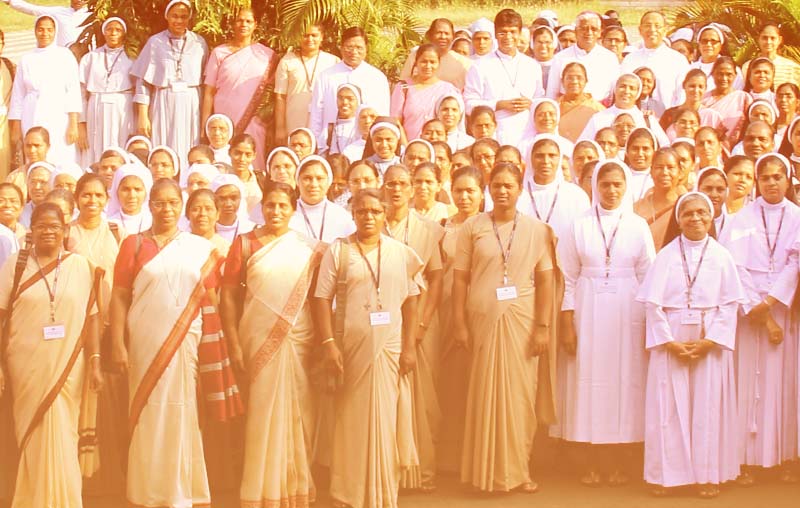
History
From its humble beginnings in July 1943, the Catholic Health Association of India has grown into the world’s largest health care organisation in the voluntary sector.
CHAI’s journey through seven decades has been an inspiring saga of challenges and changes. The story began way back in 1920 when Sr Dr Mary Glowrey, an Australian Sister-Doctor landed in Guntur, Andhra Pradesh, with a new vision and a definite mission. She founded the association in 1943 along with 15 sisters with the goal of providing curative care to people, especially to the poor, women and children.
During the first fourteen years, CHAI was managed by the sisters themselves. However, the pioneers had regular annual meetings and a very disciplined way of functioning. At that time, the CHAI office was housed in a ‘steel trunk’, and it operated on a shoestring budget, but was rich in commitment and service. The steel trunk moved with the president or secretary. As CHAI grew in strength, its vision got broadened. Promoting community health, CHAI began to see health as a basic human right.

Growth
The Catholic Hospital Association (CHA) was registered in 1944 covering India, Burma, Sri Lanka and Pakistan (after partition till 1956). Reporting the event, an editor in Tiruchirapally headlined it as the “Genesis of a Great Initiative”.
Sr (Dr) Mary Glowrey was appointed the President and she continued till December 1951. She was on the Board as the first Vice-President till October 1956, six months before her death. In 1957, Fr James S Tong SJ became the first Executive Director of CHAI and the office was transferred from the steel trunk to a small room in a building, belonging to the Archdiocese of Delhi, and it found a more stable place.
The late 60s and early 70s witnessed the development of pioneer community health projects by NGOs in the country. This was also the early phase of structural analysis of society in India to understand the root cause of malnutrition, ill health, sickness and early death. In the mid-seventies, three new departments evolved namely, Hospital Pastoral Care Service, Legal Service Department and the Medical Moral Affairs Department. A year later, the Central Purchasing Service (CPS) was initiated to assist health organizations in India to procure indigenous equipment for health services against payment in foreign exchange.
The Eighties witnessed several events. CHAI began to focus more specifically and analytically on problems and needs of the poor and marginalized. It articulated a new vision of health and developed strategies and programmes to achieve the same. Community Health was identified as a priority and considered as a major thrust area. During the Nineties, CHAI felt the need to develop a three-tier – national, regional and district (diocesan) levels – approach to tackle the issues. It developed new strategies such as decentralization, bottom-up approach and networking in realizing its vision and mission of building healthy communities.
Currently, CHAI has a membership of 3570 Health Care Institutions and Social Service Societies. Of these, 2333 are small Health Centers in remote areas; 628 of them are Secondary and Tertiary Hospitals mostly in small towns, and 5 of them are Medical Colleges. In addition to this, the CHAI network has 780 Care and Support Centers for People Living with HIV, children and youth with disabilities, the terminally ill, and so on. 80% of CHAI member institutions are located in remote and unreached areas across the country, operating under 11 Regional Units. Through the network, CHAI extends curative services to over 21 million patients in a year. This happens with the help of a core-team of full-time volunteers, mostly nuns. These fulltime volunteers include about 1000 Sister-Doctors, 25,000 Nurses, 10,000 Paramedics, and 15,000 Social Workers. Along with these full-timers, the CHAI network also has a huge number of employees.
Promotion of Community Health continues to be the main thrust. Capacity- building has been given an added emphasis. CHAI implements several Community Health Projects across India. These projects focus on several thematic areas like maternal and child health, communicable diseases, non-communicable diseases, interventions for Children and Youth with Disabilities, capacity-building, networking, disaster response, and so on. During the financial year 2016-2017, CHAI implemented 28 such projects, partnering with 465 Member Institutions and 404 NGOs, touching the lives of 12 Million (12,002,790) people, especially the unreached.
“to increase the quantity and quality of medical service available to the people of India”






